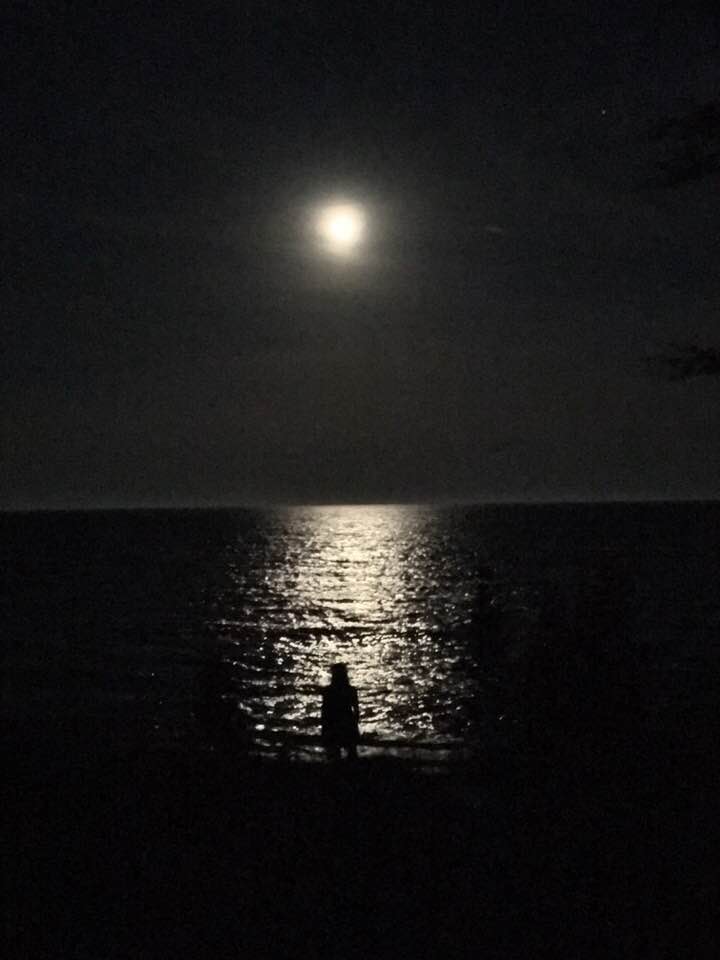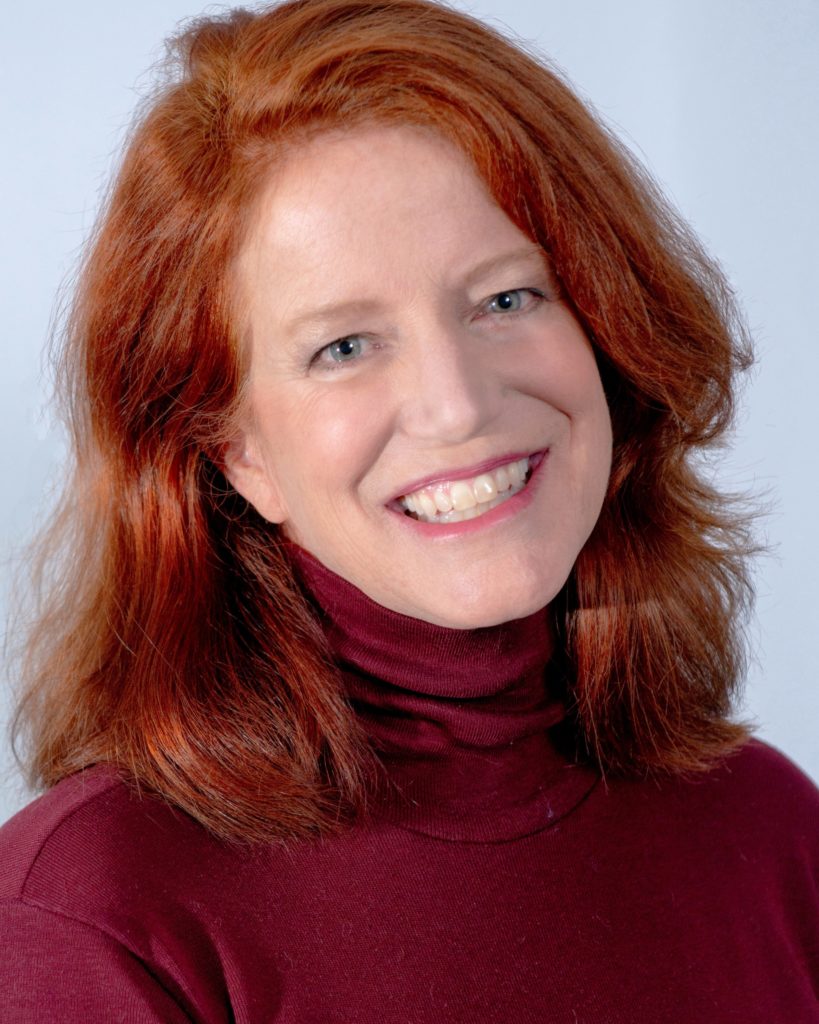Culture Club: The Moon over Lake Michigan
- Share
- Tweet
- Pin
- Share

by AMY ENSIGN, Producing Artistic Director, Door Shakespeare
There have been amazing night skies in Door County lately.
A few weeks ago, I woke up my son to see whether he wanted to chase down the northern lights. I could see them above our house in Sturgeon Bay, but I wanted to head north. If we could see them in town, they’d be even more spectacular farther away from the city lights.
After a quick call to a friend on the east side of the peninsula (should we go right or left at the stoplight?), we took the right fork and headed up Highway 57 toward an area I know well.
There is a field just on the other side of the tree line that borders the Door Shakespeare theater at Björklunden. I’ve looked up from that field and seen meteor showers, shooting stars and countless constellations during my years at Door Shakespeare. After my very first opening night, I saw the most beautiful full moon shining over Lake Michigan.

I knew we’d be able to see the aurora borealis there.
The night sky over that field has brought so many delights to the actors who grace the Door Shakespeare stage, and as I looked at the northern lights, all I could think was, “I wish the company was here to see this.”
Everything is more grand after a show at Björklunden: even the familiar moon.
Nine months ago, longtime company member Scott McKenna Campbell suggested that I read The Old Man and the Old Moon, with book, music and lyrics by PigPen Theatre Company.
As soon as I read the first lines of the play, I knew it was the right piece for my first season as Door Shakespeare’s artistic director: “Have you seen the moon tonight? It’s waning – a three-quarter moon. Like a coin held between your thumb and forefinger. Me – I’m partial to a full moon. The kind of moon that draws you in until it’s all you can see.”
Peruvians see a fox in the moon. In China, they look up and see a toad. New Zealanders see a woman carrying a gourd. And in the U.S., it’s a man or a rabbit. What do you see?
As many people as there are on the earth, there are that many stories about the moon.
There is a Nigerian folktale about a starving old woman. The moon, feeling sorry for the woman, offers to feed her. Every time she has her nightly moon meal, the moon gets smaller and smaller until there is barely any moon left. The people below complain about the lack of light and hide in the old lady’s house to see for themselves what’s happening. When the moon comes down for the woman’s nightly snack, the people rush out, and the moon rushes away in fear.

An Inuit folktale tells the story of a brother and sister left behind by a hunting party. The girl became the sun, and the boy became the moon, and he chased her to try to catch up with her. Without food, the moon waned slowly away from starvation until he was gone; then the sun reached out and fed him from the food dish she carried. After the moon was fed and full, they continued with their game of tag until the brother was hungry again.
In a myth of the Luyia people of Kenya, in East Africa, the sun and moon are brothers. Jealousy and fighting intervene in their relationship; they wrestle; and the moon falls into the mud, extinguishing some of his light. They stop fighting and are ordered to shine at different times to avoid more turmoil.
Shakespeare has his own stories of the moon. In A Midsummer Night’s Dream, the character of Robin Starveling plays the moon in his friend’s play within the play: “This lantern doth the hornèd moon present. Myself the man i’ th’ moon do seem to be.”
When Romeo swears “by yonder blessed moon” his love to Juliet, she cries, “O, swear not by the moon, the inconstant moon, That monthly changes in her circled orb, Lest that thy love prove likewise variable.”
And our Rosalind in this summer’s As You Like It will shout at dueling lovers when the talk gets to be too much, “’Tis like the howling of Irish wolves at the moon!”
Along with Shakespeare’s As You Like It, this summer in Door County we’ll see a moon featured in The Old Man and the Old Moon. In the play, the moon, full of liquid light, needs to be topped up daily due to a leak. When the wife of the Old Man (who serves as the moon’s caretaker) is drawn away by a memory of the past, the Old Man follows her, leaving behind his duty to the moon. The moon gets smaller and smaller by the moment, finally disappearing altogether.
Throughout his journey, the Old Man must decide between duty and routine, or love and adventure. He chooses love and adventure – a choice that takes him on a seafaring epic with storms, battles, sea monsters, cantankerous ghosts and the fiercest obstacle of all: change.

We begin rehearsals at the end of May and open at the end of June. I can’t wait to welcome the company members, who are coming from New York, Chicago, Milwaukee and (a first for us) El Paso!
Since the night I saw the northern lights with my son, Door County has had a few opportunities to view the aurora borealis. Each time I think, “Wait until the company gets here! I want them to see this!”
We will all have to wait just a little bit longer.
Many moons ago, when I was homesick at summer camp, a counselor taught me a song that I still sing when I miss someone: “I see the moon; the moon sees me. The moon sees somebody I’d like to see …”
The company will arrive in a little more than two weeks, and I’ll have to rely on the moon to keep me company until then.
Peninsula Arts and Humanities Alliance, which contributes Culture Club, is a coalition of nonprofit organizations that seeks to enhance, promote and advocate the arts, humanities and natural sciences in Door County.




